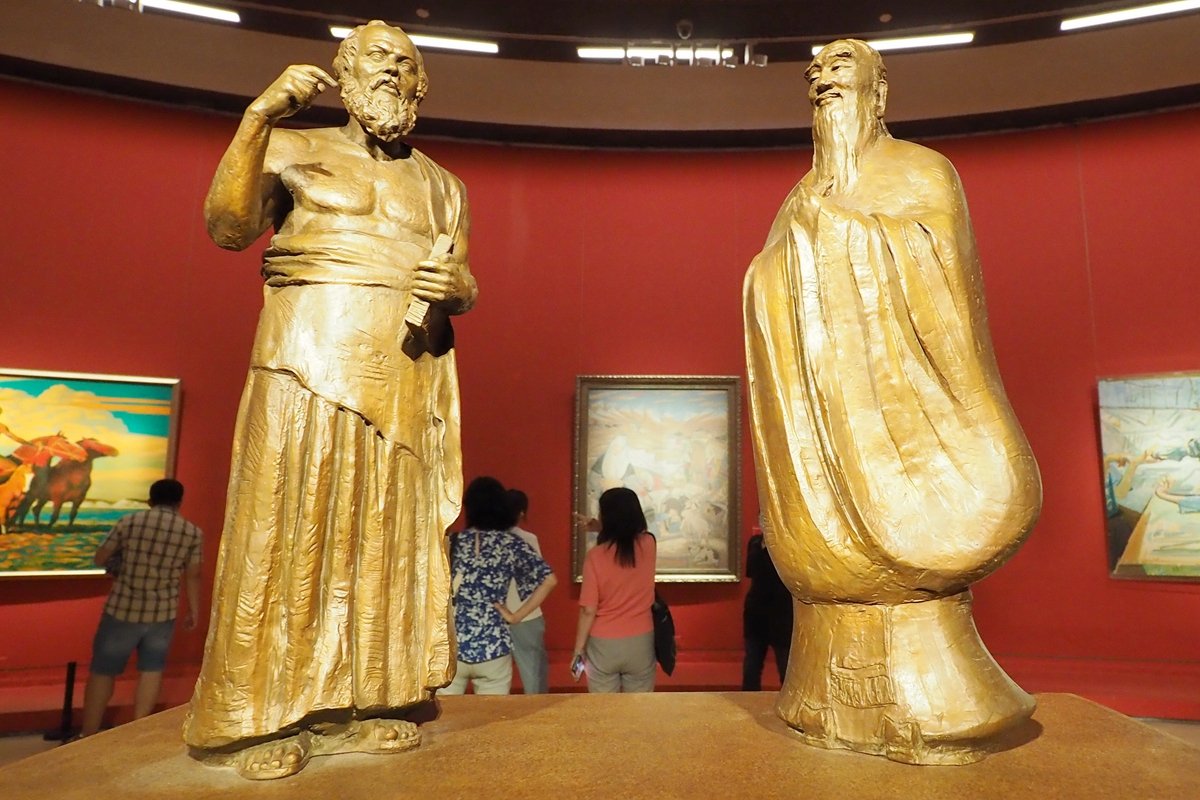In the shadows of Giza’s Great Pyramid and Sphinx, the melodious strains of “Impression of Roses” resonate, symbolizing the harmonic convergence of cultures. A joint creation by Chinese and Arab artists, this piece interlaces the notes of the Chinese pipa, a four-stringed lute, with the Arabian oud. This musical collaboration encapsulates the mutual reverence and understanding between two of the world’s ancient civilizations.
Zhao Cong, a distinguished pipa maestro and president of the China National Traditional Orchestra, expressed the profound connections between the pipa and the oud. The shared ancestry of these instruments exemplifies the richness of cultural dialogues, especially the one flourishing between China and Egypt.
In Athens, the heart of ancient Greek civilization, a symbolic encounter between two philosophical giants, Confucius and Socrates, has been conceptualized. Chinese artist Wu Weishan crafted a sculpture in the xieyi style that imagines Confucius enlightening the masses in Greece, symbolizing the interplay of ideas and shared aspirations.
Stelios Virvidakis, affiliated with the University of Athens and the Center of Chinese and Greek Ancient Civilizations, highlighted the enriching interchanges happening at his center. Scholars from varied backgrounds offer lectures that Greek students find both illuminating and motivational. Virvidakis passionately believes in the universal emotional connect that binds humanity, emphasizing that enriching exchanges foster global unity.
Highlighting the significance of these interactions, Chinese Ambassador to Greece, Xiao Junzheng, emphasized the mutual enlightenment derived from Chinese and Greek civilizations. He believes that the combined wisdom of these two cultural powerhouses can guide the global community in confronting modern challenges and forging a shared destiny.
BRI’s essence revolves around reinforcing human connections. Rooted in the ethos of the ancient Silk Road, the initiative focuses on cultural, educational, and media exchanges, championing the spirit of camaraderie. By mid-2023, China has formalized cultural and tourism collaborations with 144 BRI associates.
Testaments to these strengthening bonds are evident across Europe. In Hungary, students from leading universities have been engaged in discussions and analyses of Chinese literature and culture. Chinese media products, from online novels and games to series and films, are gaining immense popularity among global youth. For instance, Megyeri Janka, a student at Eötvös Loránd University, offered insights into a trilogy by the writer Ergen, comparing Eastern and Western fantastical narratives.
Meanwhile, in Serbia, Chinese media offerings have carved a niche. Young Serbians are increasingly turning to Chinese streaming dramas, TV shows, and games as windows into Chinese culture.
The BRI’s foundational philosophy aligns with China’s age-old values of harmony, mutual benefit, and collaborative success. For global youth, the BRI, stemming from China’s deep-rooted culture, encapsulates a universal vision shared across civilizations.
Highlighting the essence of cultural unity, Yara Ismail, an academic at Cairo University, shared an Arab proverb reflecting the beauty of diversity. Parallelly, Indonesian sinologist Novi Basuki drew a beautiful analogy between the intricacies of playing the traditional angklung and global harmony. The need for cooperation to produce melodious tunes mirrors the global aspiration for a harmonious world.
BRI’s mission champions cultural equity, dialogue, mutual learning, and inclusiveness. It aspires to bridge cultural chasms, promote understanding, and celebrate shared human values, echoing the timeless adage: unity in diversity.
READ MORE:
